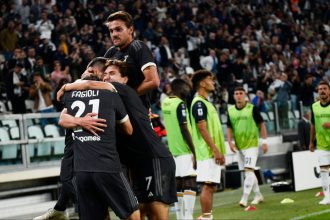da prosport bet: Tony Cozier looks back at cricket in the Caribbean in 2004-05
da bet sport: Tony Cozier20-Sep-2006Over the past decade, this space in the almanack has become an annuallitany of despair. Last year’s report on West Indies cricket referred to “themost agonising period in its history”; the year that followed was to be evenworse.The most acrimonious and protracted row yet between the West IndiesCricket Board and the West Indies Players’ Association led to the replacementof Brian Lara as captain, the refusal of most of those selected to tour SriLanka, a split between the players, and the intervention of the Caribbeangovernments. The board’s projected loss of $7m for the year endingSeptember 2005, double that of the previous year, compounded the crisis.Meanwhile, the WICB elected their fourth president in six years, and thechairman of the company organising the 2007 World Cup in the Caribbeanresigned over differences with the board, heightening misgivings overwhether the region was capable of such a massive undertaking.The latest trouble between the board and players began within weeks ofa rare success, in September 2004, when West Indies won the ChampionsTrophy in England. It was sparked by the board’s decision to replace itssponsor of 18 years, Cable & Wireless, with Digicel, an Irish newcomerengaged in a fierce conflict with C&W for the Caribbean’s mobile-telephonemarket. The Players’ Association objected to clauses relating to the Digicelsponsorship in the team’s contracts for a one-day series in Australia, claimingthat they infringed players’ rights to sign individual endorsements with othercompanies, and it advised members not to sign.The dispute was eventually referred to the cricket subcommittee of theCaricom (Caribbean Community) governments. A provisional ruling enabledthe WICB to pick its best team for the tournament in January, though theywon only one of their six matches and failed to reach the finals.But the issue resurfaced once the squad returned home, leading to theend of Lara’s second stint at the helm. When six players were disqualifiedfrom selection for the First Test against South Africa because of theirindividual contracts with Cable & Wireless, Lara withdrew in protest. Hehad a C&W contract himself, though he had not been banned because hisdeal predated the sponsorship switch. Vice-captain Shivnarine Chanderpaultook over.Cable & Wireless freed its players of their obligations so that they wereeligible for the Second Test. But, even after their reinstatement for the restof the home season, the issue would not go away. When the board named 13players to tour Sri Lanka in July, ten, including Lara, withdrew. The level ofenmity between the parties was obvious in a lengthy media release from thepresident of the Association, Dinanath Ramnarine, stating that “we are facinga tyrannical and despotic WICB that has suspended its discretion, jettisonedall reasoning and is hellbent at all costs to do the bidding of its sponsor”.Obliged to fulfil the ICC’s schedule, the board hurriedly assembledreplacements, mostly from an A-team already touring Sri Lanka. As it was,eight members of the A-team joined the Test squad the day after signing a collective declaration refusing the summons to do so, which created such internal wrangling that the management felt obliged to move the two teams into separate hotels. Chanderpaul was the only one of the new squad with more than ten Tests to his name.Meanwhile, back in the Caribbean, there was a public war of words between Cable & Wireless, who accused the WICB of unfair practices, and Digicel. In what was seen as an unusual sign of openness on the board’s part, a three-man commission, chaired by retired judge Anthony Lucky, was set up to review the negotiations that led to the change of sponsors. Their 50,000-word report, delivered in August, criticised the WICB, andparticularly the then president Teddy Griffith, for their handling of the matter, and concluded that Cable & Wireless had been unjustly treated. But it was compromised when Lucky’s fellow commissioners disagreed with his contention, in a separate report, that the Digicel contract was “legally flawed”. The board adamantly rejected several of the commission’s points, but by then Griffith had resigned because of “personal and family considerations”.He was succeeded by Ken Gordon, a 75-year-old media executive and formerminister in the Trinidad & Tobago government, who had a high reputationin the corporate world but no cricketing background. Gordon soon facedyet another resignation and another crisis. In September, Rawle Branckerquit as chairman of the World Cup organisers less than two years into thejob, citing his frustration over differences with his chief executive, ChrisDehring, and a lack of support from Griffith and other board members.Controversially, Gordon appointed himself to the position and added Griffithto the new board.Not surprisingly, West Indies continued to falter on the field. In thecalendar year 2005, their record was eight defeats against one win (athome to Pakistan) in 11 Tests. It was even direr in one-day internationals:15 defeats, with an unprecedented run of 11 including all eight at home toSouth Africa and Pakistan, against two victories. It was a nightmare for thenew head coach, Bennett King of Australia, the first foreigner to hold thepost. He and his all-Australian support staff of assistant coach, physiotherapistand fitness trainer never knew from series to series which playersthey would be working with, if any: more than 30 represented West Indiesduring the year.The discontented players finally returned to the fold for the Test series inAustralia in November 2005, after the warring parties agreed to turn to theInternational Cricket Council and the Federation of International Cricketers’Associations to settle the dispute. West Indies had their moments in Australia,notably when Lara scored his eighth double-hundred and overtook AllanBorder as Test cricket’s leading run-scorer, but they lost all three Tests.At regional level, the domestic competitions were streamlined. In2004-05, they were contested only by the six traditional territories, with theUnder-23 side and invited foreign team included in the previous four firstclasstournaments both dropped. Home and away rounds meant that theremaining teams played ten league matches, up from seven. There was anunmistakable shift in the balance of power. Barbados, first-class regionalchampions for the previous two seasons and unbeaten for 21 matches, lostsix out of ten in 2004-05, and slid from top to bottom of the table.They were replaced as the dominant force by Jamaica, a well-led, wellbalancedside, even when five of their players were on international duty.They comfortably headed the table, with seven victories – including theirfirst five games – and only one defeat, and secured the Carib Beer Cup aftervictory in the final against the plucky Leeward Islands, whose brave secondinningsfight meant the result was less straightforward than an eight-wicketmargin indicated. Chris Gayle dominated the match with hundreds in eachinnings, but he played only two other games during the tournament. WavellHinds and Marlon Samuels also compiled big scores on their return fromAustralia, but Jamaica’s overall success depended on those who playedthroughout the season.Donovan Pagon scored 658 runs, which earned him a Test debut againstSouth Africa when Gayle and the others were omitted. Runs also came fromwicketkeeper Carlton Baugh and all-rounder Dave Bernard, while fastbowlers Jerome Taylor and Daren Powell led the attack. But Jamaica’s mostsuccessful bowler was 22-year-old left-arm spinner Nikita Miller, thetournament’s leading wicket-taker in his first season. He claimed 39 wicketsat under 20 apiece, and later toured Sri Lanka with the A-team.The Leeward Islands, often a disjointed side, enjoyed their best seasonsince the heady days of the 1990s, when they won three outright titles andshared a fourth. Their inspiration was 37-year-old wicketkeeper RidleyJacobs, in his final season; he signed off a distinguished career with 816runs, four centuries and an average of 62. His team-mate Stuart Williams,aged 35, was the only other batsman to pass 700 in the tournament. OffspinnerOmari Banks took 34 wickets, enough to earn a recall to theweakened Test squad for Sri Lanka.In October 2004, Trinidad & Tobago were unexpected winners of thelimited-overs President’s Cup. Making light of the absence of five internationals, including Lara, they defeated Barbados in the semi-final anddefending champions Guyana in the final. In January, they beat Barbadosagain, over four days – the first team to achieve the feat in a first-class gamesince they did it themselves in February 2002. But defeat in the return matchat the end of the qualifying stage cost them the chance to challenge Jamaicain the final. Their experienced captain, Daren Ganga, scored 610 runs,including 265 against the Leeward Islands, the domestic season’s highestindividual score. Off-spinner Amit Jaggernauth and newcomer Richard Kelly,an aggressive all-rounder, took 33 wickets each.Guyana, often hit by the weather, drew seven of their ten games. Promisingleft-hander Narsingh Deonarine and Ryan Ramdass, a thickset opener, bothpassed 500 runs; Ramdass scored three hundreds in his first full season, andwas promoted from the A-team to make his Test debut in Sri Lanka. Anotheremergency call-up for that tour was Deighton Butler, a strongly built leftarmfast bowler from the Windward Islands. Windwards were bowled outin double figures in three separate matches – one of which they still managedto win – despite the consistency of opener Devon Smith, who totalled671 runs.But the board’s grim financial situation was taking its toll. The Academyin Grenada for young players was closed after four years, and in 2005-06the domestic competitions were cut back to a single round of five matchesfor each team, plus semi-finals and final. These were troubling developments:Bennett King had repeatedly stressed that a proper structure at all domesticlevels and a significant improvement in facilities were prerequisites for liftingWest Indian cricket out of its prolonged slough.






